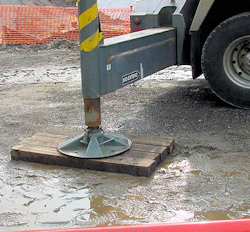Heavy Equipment
There are also many things your employer must do to ensure your safety around heavy equipment as well, such as:
- determining whether the ground is sufficiently level and firm to support the anticipated weight of hoisting equipment and associated loads;
- assessing hazards within the work zone that would affect the safe operation of hoisting equipment such as, power lines and objects or personnel that would be within the swing radius of the hoisting equipment;
- erecting barriers to mark the area covered by the rotating superstructure to warn workers of the danger zone;
- ensuring equipment is in safe operating condition via required inspections;
- complying with all manufacturer procedures regarding proper operational functions of equipment, including its use with attachments;
- ensuring safe attachment of rigging devices such as shackles, hooks, eyebolts, spreader beams and slings, wedge socket and wire rope clips;
- providing seat belts when required;
- ensuring roadways and grades are maintained to accommodate the safe movement of equipment and vehicles; and
- ensuring all earthmoving/compacting equipment with obstructed view does not operate in reverse gear unless the equipment has a reverse signal alarm, or a worker has been designated to signal when it is safe.
To learn more about cranes and rigging safety please click here. For more comprehensive information please consider reviewing OSHAcademy courses 820 Cranes and Derricks Safety I and 821 Cranes and Derricks Safety II.
Knowledge Check Choose the best answer for the question.
6-2. Proper equipment operation should be in compliance with _____.
You forgot to answer the question!

